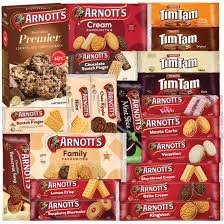Arnott’s Group, one of the main players in the Fast-Moving Consumer Goods (FMCG) industry, has established itself as a strong name in the global snack food market. Based in Australia, the company has a long history of producing iconic biscuits such as Tim Tam and Shapes. However, under new ownership since 2019 by KKR, a global private equity firm, Arnott’s Group has taken aggressive steps to expand its global reach. This article will discuss Arnott’s investment and acquisition strategies, its competition against other FMCG groups, its flagship brands, and the primary markets it focuses on.
Investments and Acquisitions as Growth Pillars
One of Arnott’s key strategies for expanding its business is through investments and acquisitions. After being acquired by KKR for AUD 3.2 billion, Arnott’s gained significant funding and strategic expertise. This move enabled the company to focus on growth both organically and through inorganic expansion.
In 2021, Arnott’s strengthened its position in the FMCG market by acquiring Campbell Soup’s snack division in the Asia-Pacific region. This move provided access to a new portfolio of brands and a broader distribution network in the region. The acquisition also added well-known brands such as Kettle and Royal Dansk to Arnott’s portfolio, expanding its presence in the premium snack category.
Additionally, Arnott’s has invested in manufacturing technology and product development to accelerate innovation. In 2022, the company allocated over AUD 100 million to build a new production facility in Australia, designed to enhance operational efficiency while meeting growing demand.
One of Arnott’s key success factors is its ability to balance local appeal with global ambitions. Its flagship product, Tim Tam, is not only a favorite in Australia but has also successfully penetrated major export markets such as the United States and China. The international popularity of Tim Tam reflects Arnott’s smart approach in adapting local products to suit global tastes without losing their distinctive identity.
Beyond exploring global markets, Arnott’s has also shown a commitment to product innovation. In 2023, the company launched new Tim Tam variants with unique flavors tailored for Asian markets, such as Matcha and Durian. This strategy not only enhances the brand’s appeal but also strengthens Arnott’s position in the rapidly growing Asian market.
In addition to innovation, operational efficiency forms a crucial pillar of Arnott’s strategy. Compared to its larger competitors, the company adopts a more focused approach to managing its supply chain. By leveraging the latest technologies, Arnott’s successfully reduced production costs by 10 percent in 2022. This approach provides the agility needed to adapt quickly to changing market dynamics.
Arnott’s brand portfolio is also a critical asset in competing against global players. Tim Tam, as an iconic product, continues to be one of the most popular biscuits in Australia, with global sales reaching AUD 500 million in 2023—up 12 percent from the previous year. Shapes, with its variety of savory flavors, dominates markets in Australia and New Zealand and has started gaining traction in Southeast Asia.
The acquisition of the Kettle brand has also proven to be a strategic move, strengthening Arnott’s position in the premium snack category. Additionally, Royal Dansk, targeting the premium biscuit market, has achieved significant sales in North America and Europe. The brand has also gained momentum in Asia, particularly in Japan and South Korea, where demand for premium products is on the rise.
Arnott’s geographical expansion reflects its strategic focus on the Asia-Pacific region, North America, and Europe. Its domestic market of Australia and New Zealand remains the largest contributor to the company’s revenue, with over 40 percent market share in the biscuit category in 2023. However, the Asia-Pacific region has now become the fastest-growing area, recording annual growth of 15 percent in the same year. Key markets include China, Japan, and Southeast Asia, driven by demand for premium products and local innovations.
In North America, brands like Tim Tam and Royal Dansk continue to grow in popularity, contributing approximately 20 percent of Arnott’s total revenue. Meanwhile, the European market, primarily driven by demand for premium products, has seen increased distribution through e-commerce platforms, enabling deeper penetration into Western European countries.
With measured strategies and a focus on efficiency, Arnott’s Group demonstrates that size is not the sole determinant of success in the global FMCG market. Amid pressure from much larger competitors, the company’s ability to innovate, optimize operations, and target markets with a tailored approach provides a significant competitive advantage. While challenges remain, Arnott’s is well-positioned to continue its growth and compete on the global stage.
Challenges and Future Prospects
Although Arnott’s strategy is aggressive, the company also faces several challenges. One of them is the fluctuation in raw material costs, such as wheat and sugar, which affects profit margins. Additionally, competition with major players like Mondelez and Nestlé remains a threat that must be addressed through innovation and efficiency.
However, Arnott’s prospects are promising. With a focus on international expansion, product innovation, and operational efficiency, the company has significant opportunities to increase its market share in the global FMCG market. According to a report by Euromonitor, the global snack food market is expected to grow by 6% annually until 2027, providing opportunities for Arnott’s to continue its growth trajectory.


